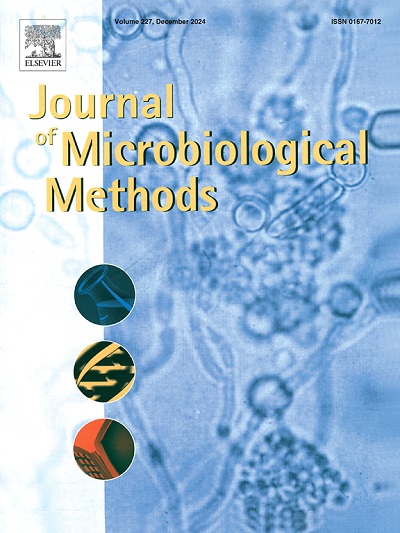Advancing innovative techniques in arbuscular mycorrhizal Fungi propagation: A key to sustainable agriculture and ecosystem management
IF 1.9
4区 生物学
Q4 BIOCHEMICAL RESEARCH METHODS
引用次数: 0
Abstract
Arbuscular mycorrhizal fungi (AMF) play pivotal roles in enhancing plant nutrient acquisition and overall ecosystem sustainability. The propagation of AMF involves several methodologies tailored to address specific research or practical objectives. So, enhancing methods for propagating AMF is pivotal for fostering sustainable agriculture and maintaining ecosystem balance at the application level. However, traditional substrate-based techniques focus on the isolation, purification, and cultivation of AMF spores, thereby enabling the establishment of pure cultures. Hydroponic and aeroponic systems have emerged as valuable platforms for AMF cultivation, offering controlled environments to study spore germination, hyphal growth, and mycorrhizal colonization. In addition, this review explores the significance of root-organ culture techniques in the propagation and study of AMF. As the demand for sustainable agriculture increases, the application of AMF in agroecosystems has gained prominence. This review discusses the implementation of these techniques in conventional and organic farming systems. In conclusion, this review synthesizes the diverse methodologies employed in AMF propagation, from traditional spore-based techniques to cutting-edge approaches. The integration of these techniques not only deepens our understanding of AMF biology but also holds promise for sustainable agricultural practices and ecosystem management.
推进丛枝菌根真菌繁殖的创新技术:可持续农业和生态系统管理的关键。
丛枝菌根真菌(AMF)在促进植物养分获取和整体生态系统可持续性方面发挥着关键作用。AMF的传播涉及针对特定研究或实际目标量身定制的几种方法。因此,改进AMF的传播方法对促进农业可持续发展和维持生态系统平衡具有重要意义。然而,传统的基于底物的技术侧重于AMF孢子的分离、纯化和培养,从而能够建立纯培养。水培和气培系统已成为AMF培养的重要平台,为研究孢子萌发、菌丝生长和菌根定植提供了可控的环境。此外,本文还探讨了根器官培养技术在AMF繁殖和研究中的意义。随着可持续农业需求的增加,AMF在农业生态系统中的应用日益突出。本文讨论了这些技术在传统和有机耕作系统中的应用。总之,本综述综合了AMF传播中采用的各种方法,从传统的基于孢子的技术到尖端的方法。这些技术的整合不仅加深了我们对AMF生物学的理解,而且为可持续农业实践和生态系统管理带来了希望。
本文章由计算机程序翻译,如有差异,请以英文原文为准。
求助全文
约1分钟内获得全文
求助全文
来源期刊

Journal of microbiological methods
生物-生化研究方法
CiteScore
4.30
自引率
4.50%
发文量
151
审稿时长
29 days
期刊介绍:
The Journal of Microbiological Methods publishes scholarly and original articles, notes and review articles. These articles must include novel and/or state-of-the-art methods, or significant improvements to existing methods. Novel and innovative applications of current methods that are validated and useful will also be published. JMM strives for scholarship, innovation and excellence. This demands scientific rigour, the best available methods and technologies, correctly replicated experiments/tests, the inclusion of proper controls, calibrations, and the correct statistical analysis. The presentation of the data must support the interpretation of the method/approach.
All aspects of microbiology are covered, except virology. These include agricultural microbiology, applied and environmental microbiology, bioassays, bioinformatics, biotechnology, biochemical microbiology, clinical microbiology, diagnostics, food monitoring and quality control microbiology, microbial genetics and genomics, geomicrobiology, microbiome methods regardless of habitat, high through-put sequencing methods and analysis, microbial pathogenesis and host responses, metabolomics, metagenomics, metaproteomics, microbial ecology and diversity, microbial physiology, microbial ultra-structure, microscopic and imaging methods, molecular microbiology, mycology, novel mathematical microbiology and modelling, parasitology, plant-microbe interactions, protein markers/profiles, proteomics, pyrosequencing, public health microbiology, radioisotopes applied to microbiology, robotics applied to microbiological methods,rumen microbiology, microbiological methods for space missions and extreme environments, sampling methods and samplers, soil and sediment microbiology, transcriptomics, veterinary microbiology, sero-diagnostics and typing/identification.
 求助内容:
求助内容: 应助结果提醒方式:
应助结果提醒方式:


